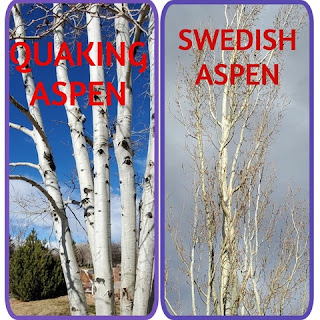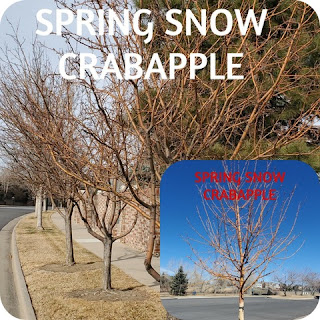In this article, I will give some identification tips for some of the trees you will usually see in your neighborhood when you are on your daily walk. Because the trees won’t be leafed out for at least another six weeks, you don’t have the leaves to help with the identification process. However there are other identifying factors such as the bark, branching structure, and buds which are valuable aids in this process.
The Ash (Fraxinus) tree (shown above) is one
you will often see in planting areas along the sidewalk. Young Ash trees usually have a smooth grayish
color while the mature Ash can be recognized by their diamond patterned ridged
bark or shallow fissures on the trunk.
The branches will have a smooth gray appearance, eventually becoming
diamond patterned with age. The
branching pattern is another giveaway with the branches and new buds being
opposite each other as shown. The two
most common ashes are Green Ash (Fraxinus pennsylvanica) which has a
leaf scar resembling the letter ‘D’ and White Ash (Fraxinus americana) which
has a leaf scar resembling the letter ‘C’.
The leaf scar is significant because it separates the Green Ash with its yellow
fall color from the White Ash with its purple fall color.
The Maple (Acer) tree (shown above) is a ‘must have’ tree often seen in the landscape. When the maple is young, the bark will be smooth with a grayish color. As the tree matures, the bark will become scaly and sometimes look like it is peeling away as shown in the photo. The branching and bud pattern on maples are opposite. Also notice that the branches are not displaying the scaly bark that the trunk does, but will become scaly with age as does the Ash. Two maples that bud out early are the Silver Maple (Acer saccharinum) and the Red Maple (Acer rubrum). This early flowering trait is a much needed pollen source for bees because the flowers are so much earlier than other pollen sources.
I can’t over look one of the most used trees in the landscape, the Quaking Aspen (Populous tremuloides). The Aspen is an easy tree to identify with its white distinctive bark. It can be found having a single trunk or a multi stemmed tree as shown above. Another species of this tree is the Swedish Columnar Aspen (Populous tremula ‘Erecta’). Not being a well known tree, it is a quick one to identify with its white bark and its columnar habit of growing to 35 feet tall and 10 feet wide with the branches almost parallel to the trunk.
The Spring Snow Crabapple (Malus
‘Spring Snow’) is a beautiful tree due to its profuse white flowers in the
spring and the fact that it is fruitless (a plus for a crabapple.) It is the only crabapple I know of that I can
easily spot because of its unique orange-yellow bark. The younger one is shown here with the trunk
and branches having that unique color.
The older Spring snow shows the mature bark becoming darker with a
pattern and has lost the orange-yellow color.
However, the growth on top as you can see still has the orange-yellow
color since it is newer growth.
Have a fun time on your next neighborhood tour and practice your new tree identification skills.
-Colorado Master Gardener Steve White




